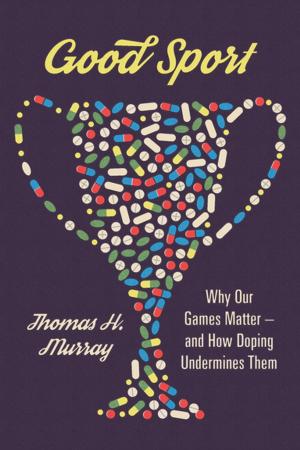Sir Charles Bell
His Life, Art, Neurological Concepts, and Controversial Legacy
Nonfiction, Health & Well Being, Medical, Reference, History, Science & Nature, Science, Biological Sciences| Author: | Michael J. Aminoff, MD, DSc, FRCP | ISBN: | 9780190614980 |
| Publisher: | Oxford University Press | Publication: | September 2, 2016 |
| Imprint: | Oxford University Press | Language: | English |
| Author: | Michael J. Aminoff, MD, DSc, FRCP |
| ISBN: | 9780190614980 |
| Publisher: | Oxford University Press |
| Publication: | September 2, 2016 |
| Imprint: | Oxford University Press |
| Language: | English |
Sir Charles Bell (1774-1842), the Scottish anatomist-surgeon, was a true polymath. His original ideas on the nervous system have been likened to those of William Harvey on the circulation of blood, and his privately published pamphlet detailing his ideas about the brain has been called the Magna Carta of neurology. He described the separate functions of different parts of the nervous system, new nerves and muscles, and several previously unrecognized neurological disorders, and he characterized the features of the facial palsy and its associated features now named after him. His sketches and paintings of the wounded from the Napoleonic Wars and his essays on the anatomical basis of expression changed the way art students are taught and influenced British and European artists, particularly the Pre-Raphaelites. He was a renowned medical teacher who founded his own private medical school, took over the famous Hunterian school, and helped establish the University of London and the Middlesex Hospital Medical School. So how is it that a man of such influence is virtually unknown today by most neuroscientists, biologists, and clinicians? Sir Charles Bell: His Life, Art, Neurological Concepts, and Controversial Legacy discusses the work and teachings of this brilliant man. His reputation was tarnished by charges of intellectual dishonesty and fraud, but his work changed the way scientists and clinicians think about the nervous system and its operation in health and disease, led directly to the work of Charles Darwin on facial expressions, and influenced the way artists view the human body and depict illnesses and wounds. Masterfully written by Dr. Michael J. Aminoff in his signature approachable style, this is the perfect addition to any library of medical history.
Sir Charles Bell (1774-1842), the Scottish anatomist-surgeon, was a true polymath. His original ideas on the nervous system have been likened to those of William Harvey on the circulation of blood, and his privately published pamphlet detailing his ideas about the brain has been called the Magna Carta of neurology. He described the separate functions of different parts of the nervous system, new nerves and muscles, and several previously unrecognized neurological disorders, and he characterized the features of the facial palsy and its associated features now named after him. His sketches and paintings of the wounded from the Napoleonic Wars and his essays on the anatomical basis of expression changed the way art students are taught and influenced British and European artists, particularly the Pre-Raphaelites. He was a renowned medical teacher who founded his own private medical school, took over the famous Hunterian school, and helped establish the University of London and the Middlesex Hospital Medical School. So how is it that a man of such influence is virtually unknown today by most neuroscientists, biologists, and clinicians? Sir Charles Bell: His Life, Art, Neurological Concepts, and Controversial Legacy discusses the work and teachings of this brilliant man. His reputation was tarnished by charges of intellectual dishonesty and fraud, but his work changed the way scientists and clinicians think about the nervous system and its operation in health and disease, led directly to the work of Charles Darwin on facial expressions, and influenced the way artists view the human body and depict illnesses and wounds. Masterfully written by Dr. Michael J. Aminoff in his signature approachable style, this is the perfect addition to any library of medical history.















